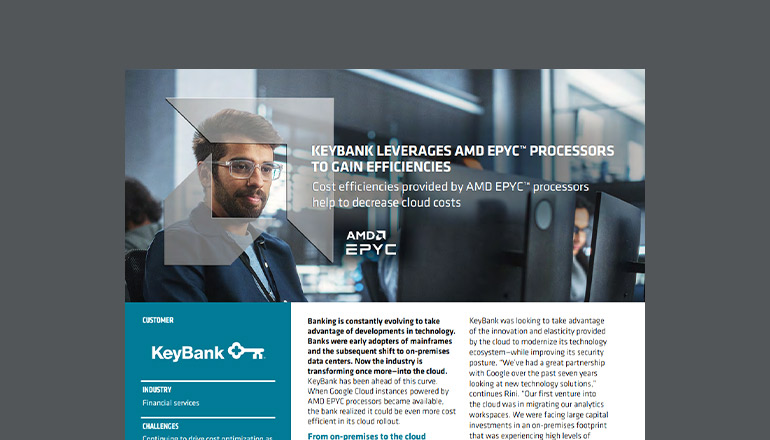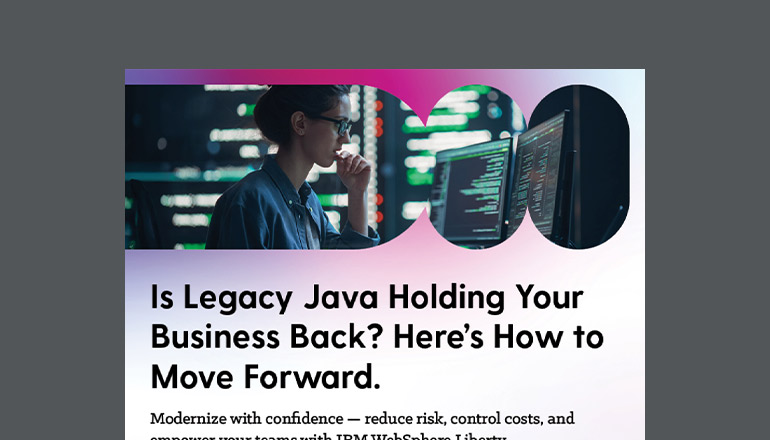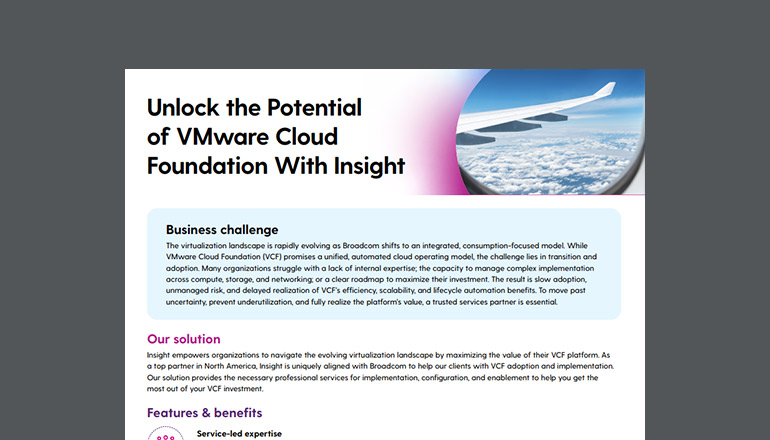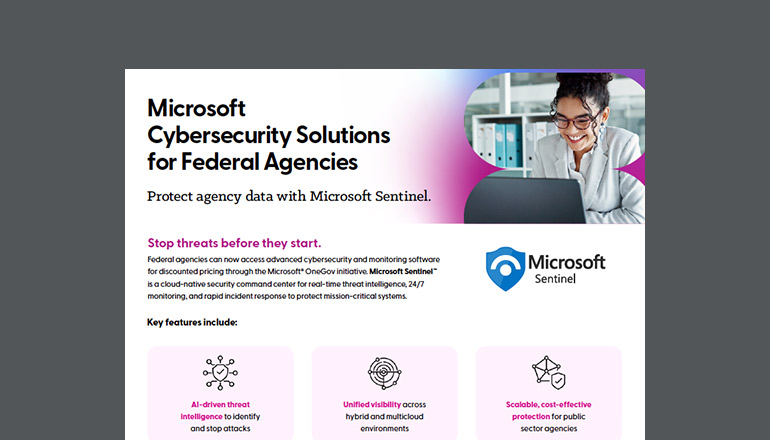Blog 5 Keys to Fast-Tracking Multicloud Success
By Michael Nardone / 25 Apr 2025 / Topics: Cloud cost optimization Cloud Microsoft Azure
Organizations benefit from a multicloud strategy in many ways, especially in the era of AI.
Of course, there are the long-established benefits of moving to the cloud: greater cost savings, performance, and scalability. For companies running into issues with a single cloud environment, course-correcting to a multicloud approach can lead to significant gains.
For example, companies may want to diversify by spreading workloads across different clouds — combatting vendor lock-in as well as the risk of a single incident compromising all operations (a.k.a. cloud-concentration risk). As AI gains momentum, the benefits of switching to multicloud can put companies on the inside track to maximizing AI’s capabilities, thanks to:
- Flexibility to distribute workloads across multiple platforms to mitigate potential outages
- Scalability to facilitate compute-heavy tasks like data analysis
- Availability of a vast range of best-in-class AI tools and services
A look at the big three cloud providers
Regarding that last point, companies may want to leverage multiple clouds simply to take advantage of their individual strengths, whether in terms of leveraging AI or meeting other requirements. Just look at the big three providers: Amazon Web Services (AWS), Google Cloud Platform (GCP), and Microsoft Azure.
AWS has been around the longest — since 2006 — and many mature, cloud-proficient businesses have appreciated its ability to let them build their own AWS environments. Then, Azure and GCP entered the picture, offering enterprises lower-code alternatives.
Azure naturally appeals to Microsoft shops who are best positioned to take advantage of Azure’s integrations with the larger Microsoft ecosystem. Of course, even companies who don’t use all of Microsoft’s platforms can benefit from an Azure environment.
Meanwhile, GCP’s native data-warehousing abilities and support for containerized workloads have helped it catch on with enterprise users, despite it being the last to enter the fray.
The unique capabilities of AWS, Azure, and GCP help companies address individual priorities. Some priorities are universal though, with 98% of IT decision-makers reporting a current or planned use of multicloud in 2024. This goes to show how pervasive — and proven effective — multicloud strategies are for optimizing costs and efficiency.
5 keys to multicloud success
Considering the move to a multicloud approach? Five keys to success stand out as ways to help you keep pace and build a winning multicloud strategy.
1. Align cloud functions & Cloud Center of Excellence (CCoE) teams.
Again, AWS is very much “build-your-own,” while Azure is a little bit more low-code and GCP falls somewhere in the middle. There are skill sets each cloud calls for, like understanding how the services work, being able to code to them, understanding how they interoperate, etc.
A lot of organizations may initially have their individual AWS, Azure, and GCP teams. For the most part, that works well, but that’s a case of having multiple clouds. That isn’t multicloud. To get to true multicloud, they have to bring those teams together through a well-structured CCoE that includes their Governance Risk, and Compliance (GRC); security; cloud platform engineering; and product management teams.
From there, organizations can effectively decide which workloads go where and how to automate across clouds. They can also nail down a generally accepted, well-architected framework with best practices for designing and running workloads that they can apply to each one.
2. Consider the full picture of your company’s digital transformation.
Every cloud provider has a well-architected framework across the same five to six pillars, for example:
- Cost-operational excellence
- Performance
- Reliability
- Security
- Sustainability
What helps companies achieve success in each domain is applying the same well-architected principles across the multicloud deployment. The biggest complications arise when a company tries to carry forward technical debt into a single cloud, let alone multiple clouds.
Ultimately, you're not going to be able to get the level of management you need across multiple clouds if you're on legacy technology. So, companies need to be forward-thinking about their technology assets and their organization as a whole to take full advantage of multicloud.
3. Develop FinOps discipline.
To truly maximize the benefit of the cloud, it's more about the “how” than the “where.” Just simply running your workload in a data center that somebody else owns isn’t inherently cheaper. Instead, savings come about through the flexibility companies get by paying only for the services they use in a public cloud.
The pricing landscape is going to constantly change due to the level of competition, too. As AWS, Azure, and GCP look for various ways to increase their market share, it’s important for enterprises to have financial flexibility when it comes to where they’re putting their workloads. It’s almost as important as technical flexibility. FinOps lets companies exercise that flexibility as much as possible while reducing friction between the finance department, the business unit, and IT. FinOps makes costs visible — and puts costs in terms that a CFO can understand.
Traditional IT procurement translates to a fixed capital expense, buying assets that depreciate over time. With multicloud, you’re using an OpEx model. Suddenly you can compute with a different provider at a lower cost or move this workload elsewhere for 50% of your average run rate. With the right guidance, you can save 20–30% on your cloud bill.
4. Use cloud-native resources wisely.
Something else to consider: Companies can see additional cost savings by running cloud-native tooling vs. third-party agnostic tools. There might even be some increased functionality. However, if you’re moving a workload from one cloud to another, you might have to rewrite or refactor part of that app or change the APIs of how you’re using it.
Public clouds provide tools to help you get the performance you need, manage, and monitor … in that specific cloud. When you run workloads using multiple providers, you need aggregate tools that deliver visibility and expansive governance across each. What made you successful in one cloud won't necessarily make you successful in multiple. Taking a hard cloud-native stance across the board won’t work from a sheer functionality standpoint. You have to be able to build and bridge new capabilities.
5. Don’t sacrifice speed or security.
Creating a consistent security posture across multiple clouds demands a high amount of effort, especially when using cloud-native tools. This can result in a huge amount of friction when the intent is to gain business momentum.
Multicloud’s security implications shouldn’t hold you back, but they need to be at the forefront of your decision-making — and a well-structured CCoE will ensure they are. If AWS, Azure, or GCP create a new service and your company’s developers want to use it, they must understand the security risks.
The companies that do multicloud security well understand they don't need to sacrifice speed or control to be secure. The key is continual benchmarking. When tools that enable continual benchmarking are in place, multicloud not only becomes secure — it becomes an asset that empowers companies to take full advantage of the cloud's agility, confidently consume services, and grow their businesses.




